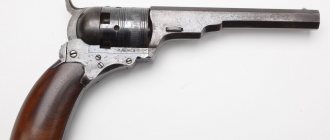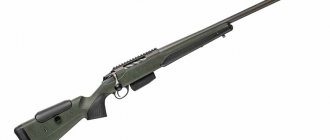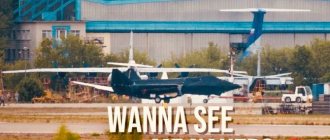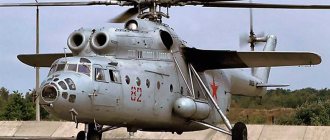The words of Russian leader Vladimir Putin, who at the end of December 2022, speaking at an extended meeting of the Board of the Ministry of Defense, hinted at continuing efforts to increase the country’s strategic superiority on the world stage in the face of increasing foreign policy pressure, can be considered truly prophetic.
“In our strategic forces, we have already created a serious scientific and technical basis for weapons and equipment that have no analogues in the world,” Putin said.
After a year, we can safely say that the task set by the president to improve ground, air, surface and underwater combat units was completed in the best possible way. Moreover, representatives of the domestic military-industrial complex have succeeded in three directions at once, related to the design of previously non-existent samples and the formation of the first production batches of promising developments, and to the testing of a number of devices in conditions as close as possible to real ones.
The editors of PolitExpert have collected seven of the most significant events in the Russian defense industry that can sober up the country’s geopolitical opponents.
Fundamentally new developments for shooters
Gunsmith specialists in Izhevsk began developing fundamentally new weapons for shooters, which (according to them) will be completely different from the well-known Kalashnikov system. The weapon will be of a modular type, which significantly simplifies production, and for its development (according to some information) ballistic ammunition is used, which is characterized by increased range, accuracy and enormous penetrating power. Today, new rifle products are under development, and Izhevsk gunsmiths say that they will only be seen closer to 2022.
New missile systems
When discussing Russia’s new weapons in 2022, experts emphasize that a new Sarmat missile will appear on the market. Data about it, naturally, are classified, but there is evidence that it will be able to move along different (unexpected for the enemy) trajectories and its flight range will reach 16,000 kilometers. A separate advantage will be the missile load, which will reach 10 tons (previously this figure reached only 8.8).
There are also plans to launch a new railway missile system, the design of which is being carried out by Moscow specialists. It will be equipped with nuclear warheads, so the new product will be highly anticipated.
Promising “new things”
No matter how spectacular the presentation of the next promising means of warfare may be, until mass production is organized, it does not represent any significant factor in exerting even a tiny influence on the potential of the country’s armed forces. Fortunately, in this area too, the domestic defense industry has moved forward, transferring a number of long-awaited developments to military personnel.
Unlike anyone else
In the summer of 2021, a pilot batch of 20 T-14 tanks on the new seven-wheel tracked Armata base was delivered by the manufacturer to the troops. First Deputy General Director of Rostec Vladimir Artyakov announced this during a plenary session at Army 2021.
wikipedia.org / Vitaly V. Kuzmin / CC BY-SA 4.0
Presented for the first time in 2015, the development is the first and only equipment of this type in the world, not designed according to the classical design. The main difference between the Armata and all domestic and foreign analogues is the use of an uninhabited combat module instead of the classic turret, which usually housed the tank commander and gunner-operator. Now the entire crew is located behind the VLD in the front part of the tank hull.
politexpert.net / Ilya Pushkarev
The shipped vehicles will be subjected to a full cycle of military tests, which are designed not only to test the equipment over time in order to identify possible shortcomings and study the operation of high-tech electronic systems, but also to prepare the crews for working with the new tank.
I'll be back
The second most significant new item handed over to the troops was the Terminator tank support combat vehicles. The BMPT was even used to form a separate staff unit in the Central Military District. The commander of the Central Military District, Alexander Lapin, announced the delivery of nine vehicles of this type to the troops on December 1.
mil.ru / Ministry of Defense of the Russian Federation
According to Uralvagonzavod, the BMPT's firepower is equivalent to six infantry fighting vehicles and 40 military personnel. A wide range of weapons, including two twin 30-mm 2A42 automatic cannons, four Ataka ATGMs, two 30-mm AG-17 automatic grenade launchers and a 7.62-mm Kalashnikov machine gun, allows the Terminator to confidently fight all types of ground armored vehicles , infantry and fortifications, and with low-flying air targets. The main objective of the development, as its name suggests, is to support tanks on the battlefield.
Hypersonic installation and its features
The most anticipated new weapons in Russia in 2022 also include the innovative ultrasonic Zircon missile, which many countries are already calling one of the most important threats to the state security of the Russian Federation. According to data received from an official source, the missile will be super-powerful - one strike can destroy two aircraft carriers at once, while the maximum destructive effect will be 1000 km. It is noteworthy that the specified data is not limiting, that is, it can be increased, which makes the missile launcher truly threatening.
It will be possible to launch a rocket launcher both from water and from land, and the principle of its design is simple (which is its genius) - after the rocket reaches maximum speed, its head will become hot, which triggers the mechanism for the formation of plasma (anti-radar cloud ), as a result of which the missile not only moves at maximum speed, but is also invisible, which can inflict a truly devastating blow on the enemy (it is extremely difficult to shoot it down).
Related news:
- Winter tire rating for 2021-2022
- Currency reform in Russia in 2022
- New tax on property of organizations and individuals...
- Increase in salaries for doctors in 2022 in Russia
- New AvtoVAZ products in 2022
- What awaits the ruble in 2022?
New air defense systems
When discussing Russia’s new weapons in 2022, it is worth paying special attention to the development of an updated multifunctional air defense system, which will be called “Standard”. Development of the system should begin in 2018, but from 2022 the country will devote all possible efforts to creating a universal weapons system. Experts emphasize that Standard will develop a new generation of anti-aircraft systems and other new weapons that will help form an updated network-centric system.
Based on new air defenses (according to statements of experts), weapons will be developed on new physical principles, that is, Russian specialists will begin to develop weapons using processes that have not been used before, which means it is worth preparing for a breakthrough by the Russian Federation “in the arms race.”
Yle (Finland): new Russian superweapon - Putin's daring bluff?
“Listen now,” Putin snapped.
Several billion rubles later, some of them are already on combat duty, but others have not yet left the drawing board.
Only one of the new products will take part in the Victory Parade on June 24: a hypersonic missile carried by a fighter jet. The rest of the superweapons will have to wait.
Weapons as a calling card
“The Russian military's keynote when developing new weapons is to bypass existing missile defense systems,” says Pentti Forsström, a Russia specialist at the National Defense University.
“Russia is striving for technological superiority and thus trying to increase the credibility of its military power,” Forsström continues.
Johan Nordberg from the Swedish Institute for Defense Research in Stockholm emphasizes that these projects have a long way to go from digital presentation to deployment in the army.
“But the important thing is that Russia continues to develop new capabilities,” says Nurberg.
“In a big war, this weapon can be used to strike behind enemy lines. For example, during a war in Europe, you will be able to hit ports in the Atlantic.”
At the same time, Nurberg emphasizes that there is no point in focusing on new types of weapons.
“If you look at Russia’s overall military potential, at the forces with which the country can actually fight, there are still few new systems,” he says.
“The main power lies in the totality of the armed forces: large ground forces are supported by aviation and navy. And, of course, the strategic nuclear arsenal plays a major role,” he says.
Trump has to catch up
“I think that we will be able to pleasantly surprise our partners with the fact that when they have these weapons, with a high degree of probability we will have a means of combating these weapons,” Putin said a week ago in an interview with state television.
According to the president, Russia had to begin developing hypersonic weapons after the United States ended the missile defense agreement in 2002.
“If Russia had not recovered and taken its worthy position in the world, the world would have been worse and more dangerous,” he said.
In this context, two new superweapons stand out: Vanguard and Zircon.
Avangard is a hypersonic intercontinental system that can be equipped with nuclear weapons. The first Avangard entered service in the winter of 2022.
“The Avangard is still in the testing phase and there are only a few of them,” explains Pentti Forsström.
According to the Russian Ministry of Defense, Avangard will gradually replace its predecessors over the next decade.
"Zircon" is a hypersonic cruise missile for destroying naval targets. Her trials also continue.
"Sarmat" and "Dagger"
“Of the weapons that the president announced, the Sarmat has advanced the furthest,” says Forsström from the National Defense University. The rocket will go on duty next year.
Sarmat is an intercontinental ballistic missile with a range of 18,000 km. The missile can be equipped with all types of warheads, including nuclear ones.
“Sarmat” will replace the “Voevoda” missile system, which is considered to be somewhat outdated.
“The dagger also appears to be already in service,” says Nurberg of the Swedish Institute for Defense Research.
Kinzhal is an air-launched hypersonic ballistic missile. In recent years, the missile has undergone extensive testing and has a range of up to 2,000 km.
In addition, the “Dagger” is the only Putin weapon that will appear at the Victory Parade in Moscow on June 24.
Aviation technology
The Russian Helicopters holding company presented at the forum a modernized Mi-28NE attack helicopter in a new technical appearance. The improvements affected, in particular, the helicopter's support system and power plant.
The Mi-28NE was demonstrated with new Khrysantema-M anti-tank guided missiles and the ability to control drones remotely (for this purpose the helicopter is equipped with special communications equipment). “The use of this missile will increase the range of destruction of armored targets to 10 km. The helicopter also received upgraded Ataka guided missiles with a laser guidance system and the ability to use aerial bombs weighing up to 500 kg,” the holding reported.
Also shown at Army 2018 were modernized and Mi-35P helicopters , which received a new set of avionics.
The Mi-35P received a sighting system and a new digital flight control system. On the updated Mi-35M, it is possible to modify the helicopter to use Igla-S air-to-air guided missiles, as well as the President-S airborne defense system with a laser station for suppressing thermal homing heads of MANPADS missiles.
of the Mi-26T2V heavy helicopter with the latest avionics and defense complex was presented in the open area On the eve of the opening of the exhibition, the machine made its first flight.
“The lighting equipment of the Mi-26T2V has now been adapted for the use of night vision goggles, and new energy-absorbing crew seats have been installed in the helicopter cabin,” the press service of Russian Helicopters said. “The on-board equipment of the Mi-26T2V will make this helicopter even more efficient and reliable even when used in bad weather and difficult terrain,” said Andrey Boginsky, general director of the holding. Serial production of this helicopter will begin in 2022.
The military transport Mi-171Sh was demonstrated in the Aviation forum pavilion . Also, to the head of the military department, Sergei Shoigu, industry leaders presented the fifth-generation multirole fighter Su-57 and the supersonic fighter MiG-31BP with the Kinzhal complex.
The Mi-171Sh helicopter is equipped with standard unguided missile weapons, bomber weapons and small arms. It is also possible to use Ataka-V guided missiles, which have a range of up to 6 km.
Marine projects
The Krylov Research Center presented its new development - a preliminary design of a light aircraft carrier .
According to a company representative, the new project will cost, according to preliminary estimates, almost two times cheaper than the previous concept of the Storm heavy aircraft carrier. However, the quality composition of the air wing (46 units) will be the same. From the accompanying materials it follows that the new aircraft carrier will have a total displacement of 44 thousand tons and will be able to carry up to 46 aircraft. The ship's power plant will be gas turbine.
| Preliminary design of a light aircraft carrier. |
| Source: © Dmitry Reshetnikov/TASS |
The air group of a light aircraft carrier can consist of the same aircraft as that of a heavy one - Su-33 and MiG-29K fighters, multi-purpose and rescue helicopters, and four radar patrol aircraft.
Rostec showed a prototype of the Nerpa underwater anti-sabotage robot capable of carrying explosives and small arms.
| Combat underwater unmanned vehicle "Nerpa". |
| Source: © Artur Shaikhutdinov/TASS |
The device is armed with an APS assault rifle. The load can also be explosives during one-time use of the device. The drone can be used to prevent violation of the boundaries of the water area, escort combat swimmers, underwater reconnaissance at a distance of up to 50 m, detect and engage targets, patrol both independently and along a given route.
The weight of the device is less than 30 kg, speed is 1 knot, power reserve is 4 hours. Immersion depth is 50 m, stable communication is provided at a distance of up to 80 m.
Drones and the future project
Undoubtedly, the most discussed and striking project on the forum was a controlled upright walking robot with the working title “Igorek” . Similar concepts of bipedal machines have previously been described in various works of science fiction.
The concept of a controlled upright complex was presented by the Kalashnikov concern. A promising goal of using an anthropomorphic complex is to solve engineering problems. The car consists of a cabin where the driver will sit, mounted on a two-legged chassis. The robot has two remotely controlled manipulator arms. The height of the machine reaches four meters. It was reported that at the next “Army” a working model of the vehicle, which will already be in service, will be presented.
Unmanned vehicles were presented in large quantities at the exhibition this year. Many defense industry enterprises showed their samples, including systems for combating drones. Thus, the new unmanned system ZALA 421-16E5V2 was presented by Zala Aero (part of the Kalashnikov concern), it is currently undergoing factory tests.
Its advantage is the flight duration - 14 hours. It is also reported that the weight of the aircraft has been reduced to 30 kg. For the first time, aerial laser scanning technology has been developed for a drone, which provides data about the area being studied, including the topography, and detects camouflaged objects and their characteristics.
The Kronstadt group showed a new unmanned system "Orion-E" .
The Orion aerial reconnaissance complex is an unmanned aerial vehicle with a maximum take-off weight of 1 ton and a maximum payload weight of 200 kg. Its height “ceiling” reaches 7.5 km, the maximum flight duration with a standard load is 24 hours, and the horizontal flight speed is up to 200 km/h.
Also for Orion, a prototype of ammunition weighing up to 50 kg and a weapon control unit were presented. According to the developers, such ammunition can be used in unmanned aircraft for use in low-intensity local conflicts.
Anti-drone systems were also shown at the exhibition. Thus, the RTI holding has developed a mobile electronic warfare system to counter unmanned aerial vehicles. Suppresses GPS/GLONASS navigation signal within a radius of 5 km. Considering the dimensions of the complex, it can be installed on almost any carrier.
The holding also showed new mobile radars for protection against drones. Their purpose is to detect within the security zone any objects that have a small effective scattering area, including unmanned aerial vehicles with linear dimensions of 20 cm, flying at altitudes up to 2000 m.
The Kalashnikov concern also presented a new version of the Rex-1 complex Unlike the previous version, replaceable modules have been added that jam not only the Wi-Fi communication channel, but also other frequencies. Modularity allows you to disable modules that are not needed at a particular moment, which simplifies the design.
Rostec presented an anti-drone “gun” for the civilian market.
The weight of the Pishchal portable electronic countermeasures system is 3 kg; range confirmed in tests is more than 2000 m, operates in the range from 600 MHz to 6000 MHz. According to the developers, this allows you to interfere with the control and navigation system of the drone and block the transmission of data from it. The “gun” interrupts communication with the UAV via five main channels simultaneously.
Special equipment
A new product from the UVZ corporation is a universal armored engineering vehicle (UBIM) , created on the basis of the T-90M tank.
In essence, UBIM is three engineering vehicles in one: a fireproof repair and recovery vehicle, an engineering mine clearing and demining vehicle. The UBIM crew consists of two people - a commander and a driver. The protected habitable compartment can accommodate three sappers. For self-defense, the vehicle is equipped with a combat module with a 12.7 mm machine gun and a sight with a thermal imager and a laser rangefinder.
Along with combat vehicles, the unique armored bulldozer B10M2S .
The main feature is the special protection of some structural parts. As a result, the operator can carry out engineering tasks calmly and safely even in the face of rockfall, falling trees, bullets and shrapnel. They also plan to strengthen it with an anti-cumulative mesh screen (they are used on tanks and serve as additional protection against guided and unguided weapons).
The Kalashnikov concern presented a new OV-2 buggy with a hybrid power plant for special forces. It was developed in the interests of the Russian Ministry of Defense.
The car is capable of speeds of up to 100 km/h and can carry up to four people, including the driver. It has a spring suspension with a hydraulic shock absorber and dual-circuit hydraulic brakes.











